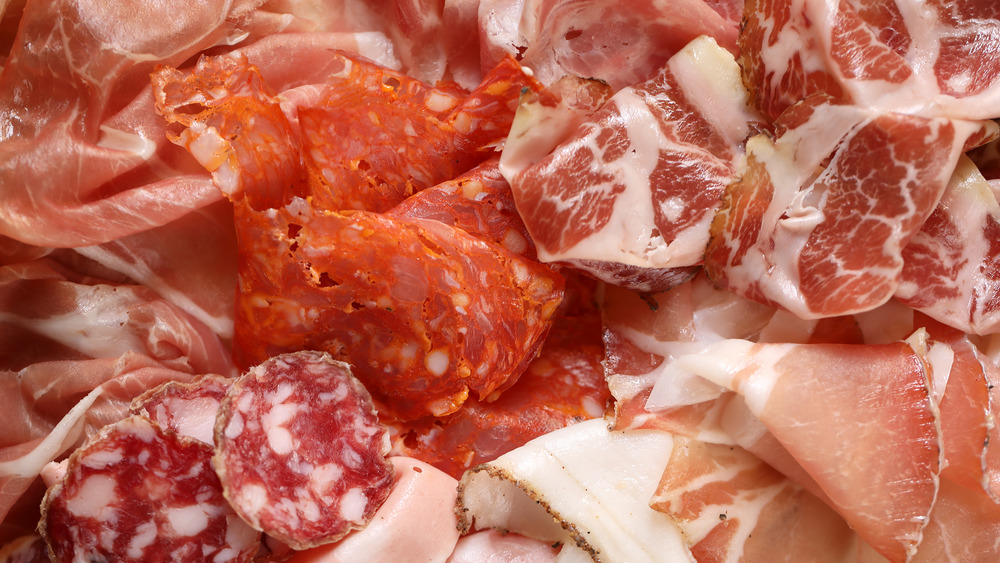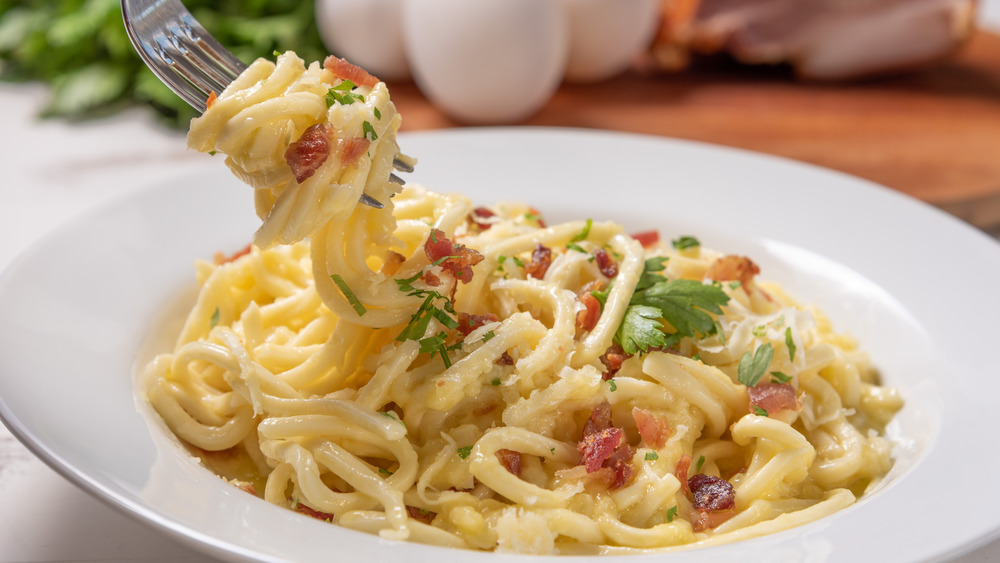Here's The Difference Between Pancetta And Guanciale
Have you ever seen "guanciale" listed on a menu and asked the server what it was? Many cooks believe you can use guanciale and pancetta interchangeably, but most Italians would gasp at that suggestion. Similarly, there's often confusion between pancetta and prosciutto, since they sound vaguely similar. However, while prosciutto can be consumed straight out of the package, it's generally suggested that raw, cubed pancetta should be cooked.
Getting back to pancetta and guanciale: They are both types of Italian salumi that are cured for several weeks. The biggest difference between the two is in the cut of pork and the spices used to cure each meat (via Due Cucina). With pancetta, pork belly is cured in salt and pepper. The meat can be sold sliced thin or cubed. Guanciale, on the other hand, is pork jowl (pig cheek), which is cured in salt and spices such as pepper, sage, rosemary, and garlic, according to Great Italian Chefs. Guanciale is usually sold sliced. Both pancetta and guanciale are salty and fatty.
How to use guanciale and pancetta in recipes
Since pork cheek fat is firmer than belly or back fat, according to salumi maker Filippo Gambassi, guanciale contains more valuable fat. He told La Cucina Italiana that guanciale can be used in Italian pasta recipes such as Carbonara, Amatriciana, and Gricia, as well as thin-sliced on top of bread as a lardo. A simple recipe of guanciale and kale can deliver fatty, salty, porky satisfaction any night of the week (via Kitchn).
Pancetta, which may be easier to find in your local grocery store than guanciale, works in a number of recipes, from savory to sweet. A Parmesan bread pudding is made better topped with slices of pancetta. Roasted cabbage will never be the same once you drizzle pancetta vinaigrette over it. And just try to go back to tomato sauce once you toss crispy pancetta and pine nuts throughout your pappardelle (via Epicurious).

